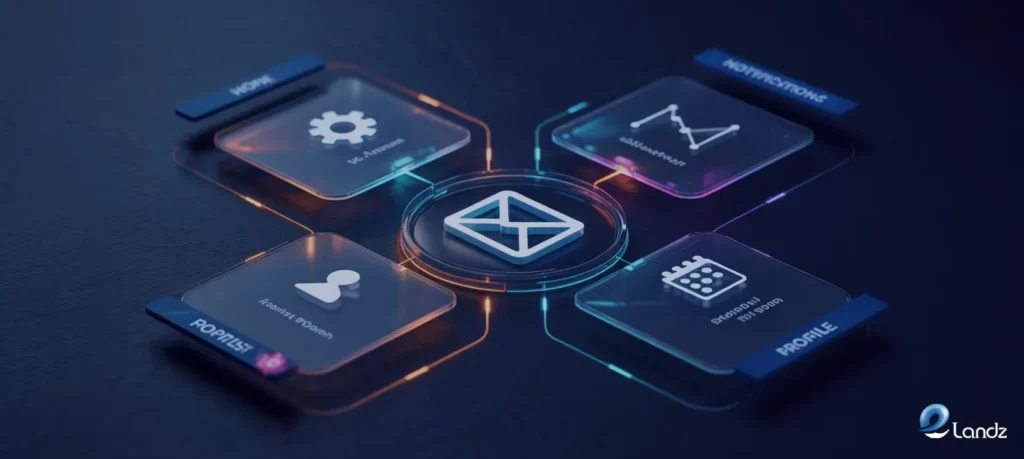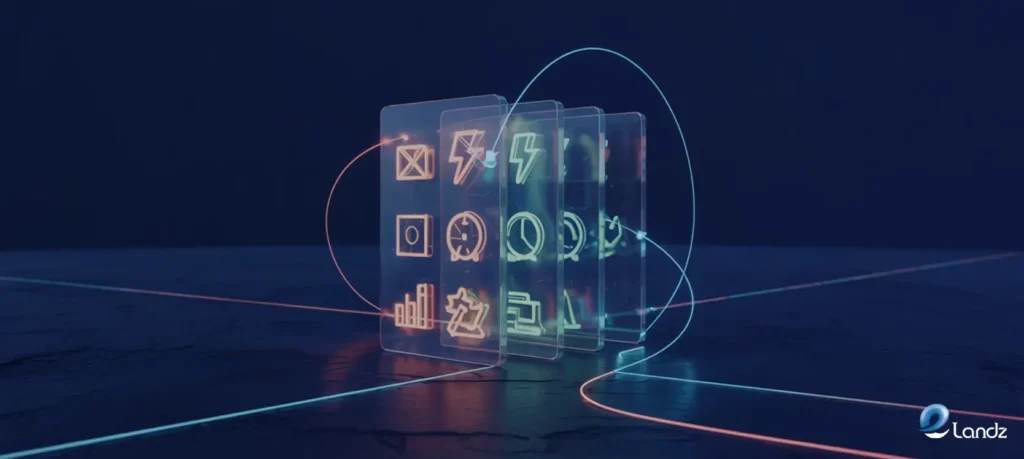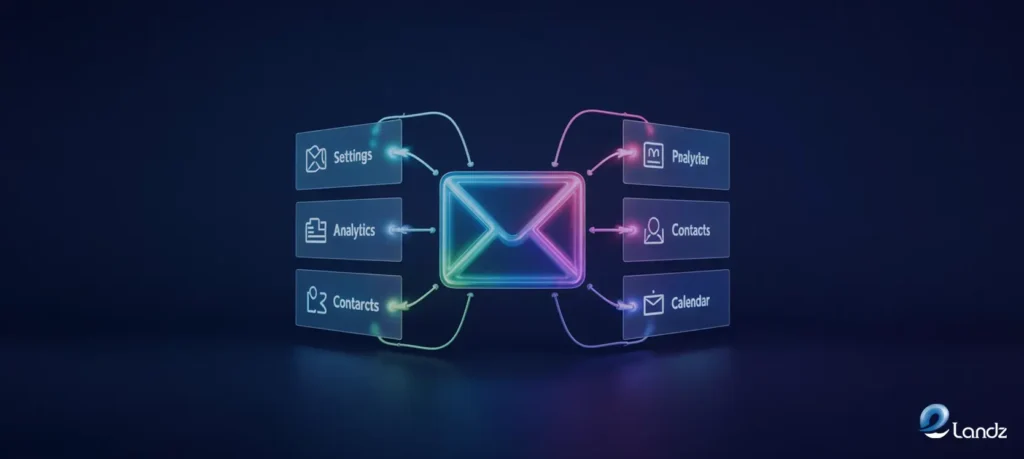
What Is Email Marketing Automation? A Complete Guide
24 Jun 2025Introduction
58% of businesses utilize automated emailing. What is email marketing automation, and why has it become an indispensable tool for modern marketers?
Email marketing automation uses technology to deliver highly targeted messages to individuals at optimal times, eliminating the need for manual outreach. This sophisticated method effortlessly ensures personalized communication. This powerful marketing strategy has transformed how businesses nurture relationships, drive conversions, and scale their operations.
Understanding the Foundation

At its core, email marketing automation is a method of creating and delivering targeted email messages using predefined rules, triggers, and workflows. Unlike traditional email blasts that send the same message to everyone, automated email systems respond intelligently to subscriber behaviors, preferences, and interactions.
The system operates through three fundamental components: workflows that map out the customer journey, triggers that initiate specific actions, and personalization elements that tailor content to individual recipients. This sophisticated orchestration ensures that every email serves a strategic purpose in guiding prospects through the sales funnel.
Modern email automation platforms integrate seamlessly with websites, customer relationship management systems, and analytics tools to create a comprehensive view of each subscriber’s journey. This integration enables businesses to craft highly relevant communications that resonate with their audience’s needs and interests.
The Compelling Benefits of Email Marketing Automation
The advantages of implementing email marketing automation extend far beyond simple time savings. Research consistently demonstrates that automated emails generate significantly higher engagement rates and revenue compared to traditional email campaigns.
Enhanced Personalization Capabilities
Automation enables unprecedented levels of personalization by leveraging subscriber data, behavioral patterns, and purchase history. Instead of generic mass communications, businesses can deliver highly relevant content that speaks directly to individual interests and needs. This personalization extends beyond simply inserting a first name—it encompasses product recommendations, content preferences, and timing optimization.
Improved Customer Retention and Engagement
Automated email sequences excel at maintaining consistent touchpoints with customers throughout their lifecycle. By delivering timely, relevant content, businesses can significantly improve customer retention rates while fostering deeper engagement. The ability to re-engage dormant subscribers through targeted campaigns helps maximize the value of existing email lists.
Scalability and Efficiency
One of the most significant advantages of email automation is its scalability. Whether serving hundreds or hundreds of thousands of subscribers, automated systems maintain consistent performance without requiring proportional increases in staff or resources. This scalability makes it an ideal solution for growing businesses seeking to maintain personalized communications at scale.
Data-driven Optimization
Automated email platforms provide comprehensive analytics and insights that inform strategic decisions. Marketers can track open rates, click-through rates, conversion metrics, and subscriber behavior patterns to continuously refine their approach. This data-driven methodology ensures campaigns become more effective over time.
Strategic Implementation: Building Your Email Automation Framework
Effectively implementing email marketing automation demands a strategic approach, ensuring it aligns with both business goals and customer needs. This process starts by clearly outlining objectives and understanding your audience’s complete journey, from first awareness to final conversion.
Goal Definition and Audience Segmentation
Before launching any automated campaigns, businesses must establish clear objectives. Defining specific goals, whether it’s nurturing leads, retaining customers, or boosting sales conversions, is crucial as these objectives will shape your entire automation strategy. At the same time, segmenting your audience thoroughly ensures your messages effectively reach the most relevant people.
Effective segmentation goes beyond basic demographics to include behavioral data, purchase history, engagement levels, and lifecycle stages. This detailed segmentation enables highly targeted messaging that resonates with specific audience segments.
Customer Journey Mapping
Creating a comprehensive customer journey map is essential for identifying automation opportunities. This visual representation highlights key touchpoints where automated emails can provide value, guide decision-making, or address potential concerns. The map should encompass every stage from initial awareness through post-purchase engagement.
Content Strategy Development
Successful email automation requires compelling, relevant content that serves specific purposes within the customer journey. This content must be carefully crafted to address different subscriber segments and journey stages while maintaining brand consistency and voice.
Essential Email Automation Types Every Business Should Consider

Understanding what is email marketing automation means recognizing the diverse applications and use cases that can benefit your business. Several fundamental automation types form the backbone of successful email marketing strategies.
Welcome Email Sequences
Welcome emails represent one of the most critical automation opportunities, as they set the tone for the entire subscriber relationship. These messages typically generate significantly higher engagement rates than standard promotional emails and provide an opportunity to make a strong first impression.
Effective welcome sequences introduce new subscribers to your brand, set expectations for future communications, and often include special offers or valuable resources. The key is creating a warm, informative experience that encourages continued engagement.
Abandoned Cart Recovery
For e-commerce businesses, abandoned cart emails represent a crucial revenue recovery opportunity. These automated messages target shoppers who added items to their cart but failed to complete the purchase, often due to factors like unexpected shipping costs or security concerns.
Successful abandoned cart campaigns typically include product reminders, addressing common objections, and sometimes offering incentives to complete the purchase. The impact of these emails hinges significantly on when they are sent and the content they contain.
Lead Nurturing Campaigns
Lead nurturing through automated email sequences guides prospects through the sales process by providing valuable information, addressing concerns, and building trust over time. These campaigns are particularly effective for businesses with longer sales cycles or complex purchasing decisions.
The content progression in nurturing campaigns typically moves from educational and informational to more product-focused and promotional as prospects demonstrate increased interest and engagement.
Re-engagement Campaigns
Re-engagement emails are specifically designed to reconnect with subscribers who have shown a decline in their interaction with your communications. They aim to revitalize interest from previously active but now disengaged recipients.
These campaigns attempt to rekindle interest through special offers, content updates, or simple check-ins to understand changing preferences.
Effective re-engagement campaigns often include preference centers that allow subscribers to customize their email experience, potentially saving relationships that might otherwise result in unsubscribes.
Advanced Automation Strategies for Maximum Impact
As businesses become more sophisticated in their email marketing approach, advanced automation strategies can provide competitive advantages and improved results.
Behavioral Trigger Campaigns
Advanced automation systems can trigger emails based on specific website behaviors, such as viewing certain product categories, spending time on particular pages, or downloading resources. These behavioral triggers enable highly contextual messaging that addresses immediate interests or concerns.
Dynamic Content Personalization
Modern email automation platforms support dynamic content that changes based on subscriber attributes or behaviors. This capability allows a single email template to display different products, offers, or messaging to different segments, maximizing relevance while minimizing creation effort.
Cross-channel Integration
The most effective email automation strategies integrate with other marketing channels to create cohesive customer experiences. This might include coordinating email campaigns with social media advertising, website personalization, or direct mail efforts.
Measuring Success With Key Metrics and Optimization
What is email marketing automation? It includes recognizing how to measure its effectiveness and continuously improve performance. Key metrics provide insights into campaign performance and identify optimization opportunities.
Essential Performance Metrics
Beyond basic open and click-through rates, successful email automation programs track conversion rates, revenue attribution, list growth rates, and subscriber lifetime value. These measures collectively offer a thorough understanding of how well the automation program is performing.
Engagement metrics like time spent reading emails, forward rates, and social sharing can indicate content quality and relevance. Additionally, deliverability metrics ensure messages reach intended recipients.
Continuous Optimization Strategies
Successful email automation requires ongoing testing and refinement. A/B testing different subject lines, content formats, send times, and call-to-action placements can reveal optimization opportunities. The key is implementing systematic testing protocols that isolate variables and provide actionable insights.
Choosing the Right Platform

The success of email marketing automation heavily depends on selecting appropriate technology platforms that align with business needs and technical capabilities.
Essential Platform Features
When evaluating automation platforms, businesses should prioritize features like visual workflow builders, robust segmentation capabilities, comprehensive analytics, and integration options with existing systems. The platform should also support responsive design and provide reliable deliverability.
Scalability and Integration Considerations
The chosen platform should accommodate current needs while providing room for growth. Integration capabilities with customer relationship management systems, e-commerce platforms, and analytics tools are essential for maximizing automation effectiveness.
Common Pitfalls and How to Avoid Them
Even thoughtfully planned email automation can face issues that reduce its impact or harm subscriber trust.
Over-automation Risks
While automation provides efficiency benefits, over-relying on automated communications can create impersonal experiences that alienate subscribers. The key is balancing automation with human touchpoints and ensuring automated messages maintain an authentic brand voice.
Deliverability Challenges
Automated emails must navigate increasingly sophisticated spam filters and maintain positive sender reputations. This requires attention to technical factors like authentication protocols, list hygiene, and content optimization.
Future Trends in Email Marketing Automation
The email automation landscape continues evolving with technological advances and changing consumer expectations.
Artificial Intelligence Integration
AI-powered automation platforms are beginning to offer predictive analytics, content optimization, and send-time optimization based on individual subscriber patterns. These capabilities promise to make automation even more effective and efficient.
Enhanced Personalization
Future automation systems will likely provide even more sophisticated personalization options, potentially incorporating real-time data, weather information, location-based content, and other contextual factors.
Getting Started: Your Email Automation Action Plan
For businesses ready to implement email marketing automation, success requires a systematic approach that prioritizes strategy over technology.
Begin by auditing your current email practices and identifying automation opportunities that align with business objectives. Start with simple automation like welcome emails before progressing to more complex behavioral triggers and nurturing sequences.
Focus on creating high-quality, valuable content that serves your audience’s needs at different journey stages. Remember that successful automation enhances rather than replaces genuine customer relationships.
Conclusion: Embracing the Power of Email Marketing Automation
Email marketing automation fundamentally transforms how businesses engage with their audience. By leveraging technology to deliver personalized, timely, and relevant messages, companies can build stronger customer relationships while achieving greater marketing efficiency.
The question “What is email marketing automation?” encompasses far more than simple automated sending. It represents a strategic approach to customer communication that drives engagement, conversions, and long-term business success. As digital marketing continues evolving, email automation will remain a cornerstone strategy for businesses seeking to thrive in competitive markets.
Success with email marketing automation requires commitment to understanding your audience, creating valuable content, and continuously optimizing based on performance data. For businesses willing to invest in this strategic approach, email automation offers the potential for significant returns and sustainable competitive advantages in the digital marketplace.
FAQs
Here’s what people ask.
What is the difference between email marketing and email automation?
Email marketing is about sending emails to people in general.
Email automation is when a computer program sends specific emails automatically, like a welcome email when someone signs up.
Which tool is used for email marketing automation?
In the USA, popular tools for email marketing automation include HubSpot, Mailchimp, ActiveCampaign, and Brevo (formerly Sendinblue).
These platforms enable businesses to send targeted emails automatically based on customer behavior, manage contact lists, and analyze campaign performance.
Is email marketing easy?
Email marketing can seem straightforward to start, as sending messages is simple.
However, achieving success with it, like building a engaged subscriber list and driving conversions, requires consistent effort, strategic planning, and ongoing optimization.
Can you automate emails in Gmail?
Yes, you can automate emails in Gmail, though its native features are more basic compared to dedicated marketing automation tools.
You can use features like “Send later” or set up simple rules with “Filters” and “Canned responses” to manage routine email tasks.
What is AI marketing automation?
AI marketing automation uses artificial intelligence to make marketing tasks smarter and more efficient, going beyond simple rule-based automation.
It leverages AI to analyze vast amounts of data, predict customer behavior, personalize content, and optimize campaigns in real time.


